Imagine waking up to sunlight gently streaming through automatically opened curtains, your coffee brewing itself, and your favorite playlist greeting you as you step out of bed. Welcome to the future of home living — where smart devices for home make your space not just more convenient, but more alive.
The modern automated house system is no longer a luxury reserved for tech demos. In 2025, practical smart home gadgets unlock safety, comfort, and energy savings for everyday homeowners. But with thousands of options, picking the best smart home devices — especially smart home devices that work with Google or smart home devices to hook up to an Alexa — can be overwhelming.
That’s why we researched and tested the market to create a definitive list of the top smart devices for home. This guide surfaces the best home automation devices, the best home gadgets 2025, and reliable choices for security, smart home locks, and more — so you can build the best connected home systems for your needs.
Table Of Content
- How We Choose the Best Smart Home Devices
- Our Top Picks: A Detailed List of Smart Home Devices for 2025
- Buyer’s Guide: How to Choose the Right Smart Devices for You
- Conclusion: Building Your Dream Smart Home
- Frequently Asked Questions
How We Choose the Best Smart Home Devices
To make this list truly useful, we focused on:
- Compatibility & Ecosystem: Preference for devices that integrate with Alexa, Google Home, and common smart home platforms (so you can expand later without headaches).
- Security & Reliability: Prioritized devices with strong encryption, reputable brands, and positive user feedback on durability.
- Real-World Usefulness: Selected gadgets that solve real problems — safety, convenience, or entertainment.
- Value & Support: Considered warranty, updates, and manufacturer support — crucial for long-term satisfaction with your automated house system.
- User Reviews & Performance: Synthesized hundreds of reviews to identify consistent pros and cons that matter to buyers.
This strikes a balance between the “best home control devices” and everyday practicality.
Our Top Picks: A Detailed List of Smart Home Devices for 2025
1. Automatic Curtain Opener — Best for Effortless Morning Routines

Tired of fumbling with curtains every morning? The AutoDraw Smart Curtain Opener turns your window coverings into an automated feature of your daily routine. It’s designed to work with popular voice assistants so it’s easy to include in any best connected home systems setup.
Key Features & Benefits
This unit supports app control and voice commands, including integrations that make it one of the smart home devices to hook up to an Alexa or pair with Google Home (smart home devices that work with Google). The quiet motor ensures smooth opening and closing, and scheduling lets curtains react to sunrise or your daily routine — perfect for energy savings and privacy without the effort.
| Pros | Cons |
| Hands-free operation via app, voice, or schedule | May require track-specific installation adjustments |
| Quiet motor and reliable timing for routines | Not all curtain types are supported out of the box |
Find out why thousands of users love this device:
👉 Check Out AutoDraw Smart Curtain Opener Now
2. Mini Portable Android Projector — Best for Home Entertainment Anywhere

If entertainment is your priority, the HY300 Mini Android Projector is one of the best home gadgets 2025 for creating a cinema-like experience anywhere. Compact and built-in Android means fewer adapters and instant streaming.
Key Features & Benefits
The projector’s native Android OS makes it one of the easiest smart home gadgets to integrate into your media setup — cast, stream, or launch apps without a separate device. It’s portable, supports Bluetooth audio, and its auto-correction features help set up quickly. While it’s not a replacement for a dedicated living-room projector for bright rooms, it’s ideal for flexible, room-to-room entertainment.
| Pros | Cons |
| Built-in Android and Wi-Fi for streaming without extra devices | Best performance in low-light settings |
| Lightweight and portable for multi-room use | Built-in speakers are functional but modest |
Find out why thousands of users love this device:
👉 Check Out HY300 Mini Android Projector Now
3. Smart Stair Lights with Motion Sensor — Best for Safety and Ambiance
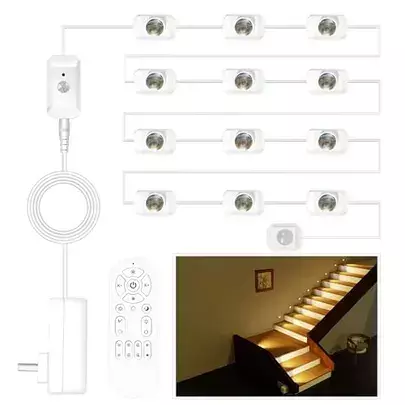
Elevate safety and style with Ameistor Smart Stair Lights. These are perfect smart devices for home security enhancements and mood lighting — transforming stairs, hallways, or baseboards with motion-activated illumination.
Key Features & Benefits
Motion sensors turn the lights on as you approach — reducing fall risk and adding ambience. Adjustable color temperature and brightness fit any decor or time of day. They also play well within larger best connected home systems when scheduled or grouped with other lights via Alexa or Google routines.
| Pros | Cons |
| Motion-activated for immediate safety lighting | Sensor sensitivity may require occasional tweaking |
| Customizable brightness and color temperature | Primarily for indoor use |
Find out why thousands of users love this device:
👉 Check Out Ameistor Smart Stair Lights Now
4. Smart Door Locks — Best for Home Security and Peace of Mind

Upgrading to a Video Smart Door Lock gives you multiple access methods — fingerprint, app, PIN — plus a camera for live views. For anyone focused on smart devices for home security, this is a must-have.
Key Features & Benefits
Combines convenience (keyless entry and remote unlocking) with monitoring (built-in camera, alerts). Supports voice assistants so it’s among the smart home devices to hook up to an Alexa or set up with Google Home for status checks and automations. The camera and access logs give hosts and families reassurance about who enters the property.
| Pros | Cons |
| Multi-factor access (fingerprint, PIN, mobile app) | Professional installation recommended for some door types |
| On-device camera for guest verification | Full features require Wi-Fi connectivity |
Find out why thousands of users love this device:
👉 Check Out Smart Door Locks Now
5. Amazon Echo — Best for Voice-Controlled Home Automation
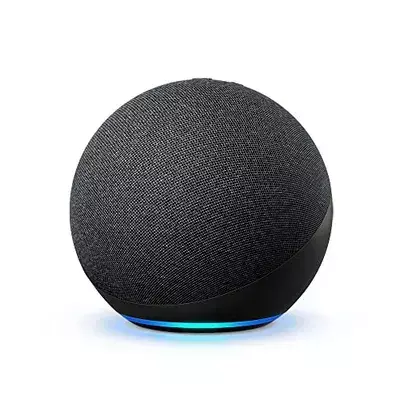
The Amazon Echo remains the most reliable hub for people building best connected home systems. Alexa’s routines make it effortless to control lights, locks, and media — ideal if you plan to use smart home devices to hook up to an Alexa-focused setup.
Key Features & Benefits
Alexa’s ecosystem supports thousands of skills and devices, making the Echo the natural center for many automation scenarios. Want a “Goodnight” routine that locks doors, turns off lights, and adjusts thermostats? Echo handles it. Echo also integrates with Google (limited) and many third-party services, making it one of the best home control devices for new adopters and advanced users alike.
| Pros | Cons |
| Massive device compatibility and Alexa routines | Requires Amazon account and ongoing connectivity |
| Easy voice automation for whole-home control | Privacy controls require user management |
Find out why thousands of users love this device:
6. Smart Plug — Best for Quick Smart Home Upgrades
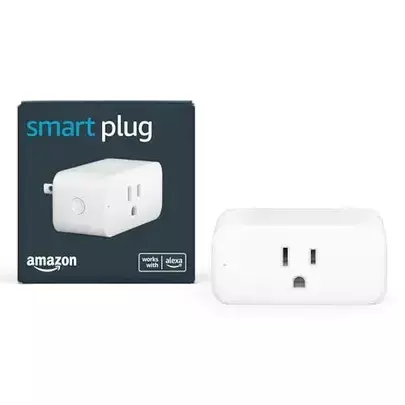
Want an instant upgrade? The Amazon Smart Plug converts any outlet into a smart port. It’s one of the best home automation devices for beginners: zero rewiring, simple Alexa routines, and on/off scheduling.
Key Features & Benefits
Perfect for lamps, fans, or seasonal decorations. Works seamlessly with Alexa (so it’s ideal if you’re building smart home devices to hook up to an Alexa setup), and helps you dip your toes into energy control without committing to a full smart switch replacement.
| Pros | Cons |
| Fast setup; ideal for beginners | Primarily optimized for the Alexa ecosystem |
| Schedules and routines for automation | Does not support power monitoring on all models |
Find out why thousands of users love this device:
👉 Check Out Amazon Smart Plug Now
7. Solid Wood Smart Nightstand — Best for Luxury and Functionality Combined
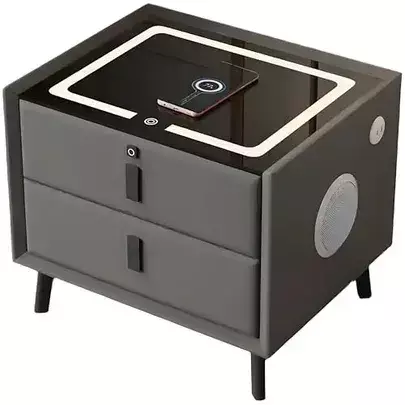
The Smart Meble Solid Wood Nightstand fuses classic furniture with tech: ambient lighting, wireless charging, and fingerprint security. It’s a standout for anyone who wants the best home gadgets 2025 with an emphasis on style.
Key Features & Benefits
Combines a durable, attractive bedside table with modern conveniences — wireless charging, discreet storage with a fingerprint lock, and app-controlled lighting. It’s a tasteful way to introduce a connected device into a bedroom without sacrificing design.
| Pros | Cons |
| Elegant design plus modern tech (wireless charging, fingerprint lock) | Heavier and pricier than standard nightstands |
| Practical bedside automation and security | Limited color/finish options compared to mass-market furniture |
Find out why thousands of users love this device:
👉 Check Out Smart Meble Solid Wood Nightstand Now
Buyer’s Guide: How to Choose the Right Smart Devices for You
Compatibility Is Key
Decide your ecosystem first. If you plan to build around Google Assistant, prioritize smart home devices that work with Google. If Alexa is your choice, buy smart home devices to hook up to an Alexa. Sticking largely to one ecosystem reduces friction and unlocks deeper automation.
Start Small, Dream Big
Begin with core devices — a smart plug or Echo (best home control devices) — then expand into smart home locks, security cameras, and scene-capable lighting. This incremental approach helps manage cost and learning curve.
Security & Privacy
For smart devices for home security and locks, choose products that offer strong encryption, two-factor authentication, and clear update policies. Devices handling access (smart home locks) are security-critical — choose brands with a strong track record.
Interoperability & Future-Proofing
Look for devices that support common standards (Wi-Fi, Zigbee, Matter where possible) so your setup can evolve. The best connected home systems are flexible, letting you swap brands without rebuilding everything.
Practical Use Over Hype
Focus on devices that solve everyday problems (safer stairs, secure entry, easier routines) rather than gadgetry alone. That’s how you build a functional automated house system that you’ll actually use.
Conclusion: Building Your Dream Smart Home
Smart home technology gives you more than convenience — it gives time back, improves safety, and adds moments of delight every day. This updated list highlights the top smart devices for home in 2025, covering smart home devices that work with Google and items that integrate seamlessly with Alexa.
Whether you start with a single smart plug or invest in smart home locks and an Echo hub, these devices are the best starting points for anyone building the best connected home systems. Revisit the list, choose what solves your daily pain points, and grow your automated house system intentionally.
Frequently Asked Questions (5)
Q1: Which smart home devices work best with Google?
Devices with official “Works with Google” certification — smart plugs, lights, locks, and thermostats from reputable brands — integrate most smoothly. Look for that label and Matter support for better interoperability.
Q2: What smart devices should I use for home security?
Start with a combination of smart locks, video doorbells, and motion-activated lighting. These three elements provide secure entry control, monitoring, and deterrence.
Q3: Are smart home locks reliable and secure?
Yes, reliable models use end-to-end encryption, offer multi-factor access, and maintain logs of entry events. Always keep firmware updated and choose brands with strong security policies.
Q4: Can I hook new smart gadgets to Alexa and Google at the same time?
Some devices support both, but mixing ecosystems can sometimes create duplicate services or limited automations. For simplicity, choose one primary assistant where possible.
Q5: What are the best home automation devices for beginners?
Smart plugs and a smart speaker (like Amazon Echo) are the easiest gateway devices. They unlock routines, scheduling, and voice control without complex installs.

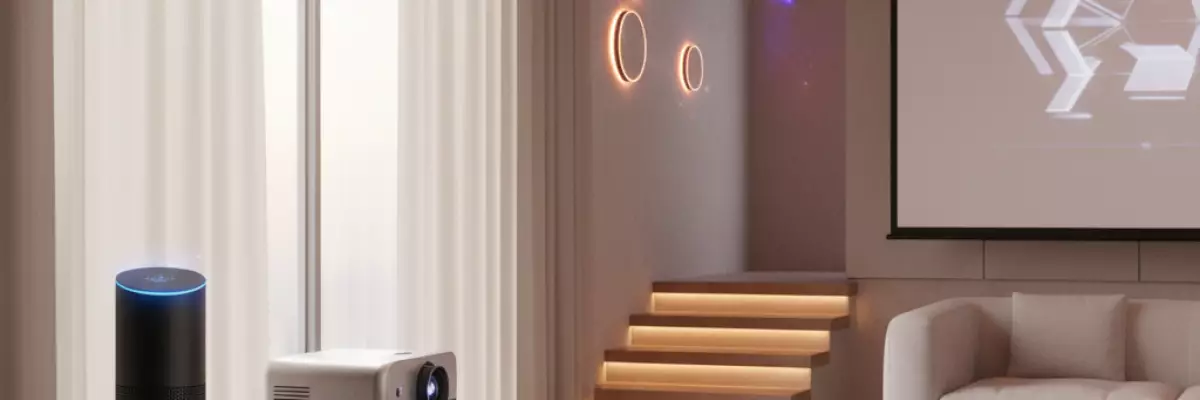



Comments (0)
Please log in to leave a comment.
No comments yet. Be the first to comment!